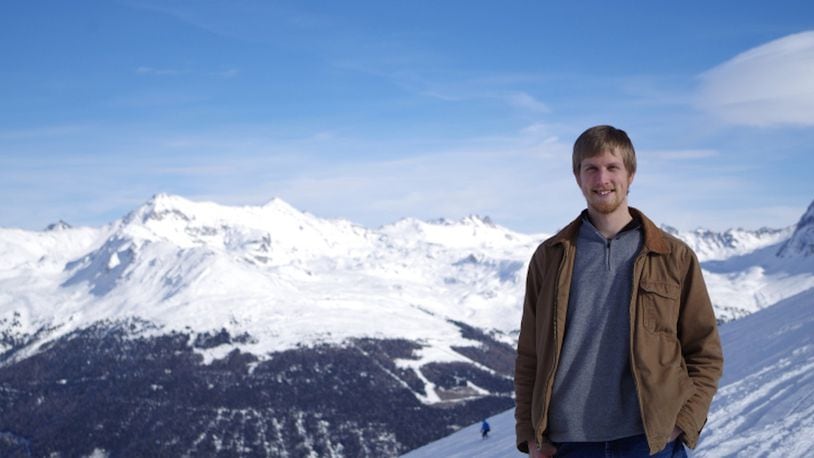He assisted in detector operations and analyzed particle collision data. His name is listed among those physicists who contributed to the Higgs discovery paper, which made international headlines in 2012 for the discovery of a sub-atomic particle that gives matter its mass.
Then, in August 2016 the former Mason resident landed a post-doc position through the University of Florida to return.
He is one of approximately 8,000 physicists who work with CERN – hailing from nations across the world. About half work on site.
“Most of these work for one of the two major detectors, CMS and ATLAS, which perform similar functions, examining all the particles coming out of a collision,” Brinkerhoff said. “Each is bigger than a house, and they are located 100 meters underground.”
Once Brinkerhoff’s time with CERN is complete, he plans to return to the U.S. and become a college professor. He lives in Strasbourg, France, near Geneva, with his wife, Mary, and their infant son.
While working with CERN sounds intriguing, Brinkerhoff said little in the work itself is glamorous.
“I spend eight to 12 hours a week in meetings, occasionally more, and try to shield my students from the same fate. A fair amount of time is spent preparing presentations, and most of the rest is writing, reading and debugging computer code. A handful of hours each week goes to just thinking or discussing the right approach to problems. And then when you’re writing a paper, lots and lots of editing,” he explained. “That said, the problem solving is fun, and I occasionally even enjoy the coding itself. It’s always enjoyable when a study works out, to see in a plot what you suspected ought to be the case. Both meetings and day-to-day work contain opportunities to teach and learn from colleagues and students.”
The most exciting moments have centered around big announcements.
“Students camped outside the auditorium overnight before the Higgs announcement, and there was also a packed house for the LIGO gravitational wave discovery, which was simulcast at CERN,” he recalled. “It’s also something to go down to the experiment, or even to walk through one of the hardware-testing hangars the size of football fields. When you get outside the office, you catch a glimpse of the scale of the endeavor.”
According to Brinkerhoff, the accelerator typically runs from May to December with collisions going on continuously, 100 million per second, for 8-16 hours at a time.
“The collider runs day and night, and only pauses to re-fill with protons, or for a few days or weeks for maintenance and upgrades,” he said. “We need this kind of volume, because most of the processes (types of particles coming out collisions) are extremely rare — some will only occur a few hundred times in the entire year, some not at all — unless there is new physics.”
While discovery of Higgs boson was the first goal of the experiment, numerous measurements and searches take place with the same data.
“One might wish that there were a few, well-motivated measurements we could do, and then know we were done; but one aspect of experimental physics is that we really don’t know what we might find next, or how much data we will need to find it,” Brinkerhoff said. “Many, if not most, particle physicists expected we would have found new physics already. Since we haven’t, predictions about what we might or might not find are even more uncertain. In reality, the experiment will continue as along as countries continue to fund it or until another, more powerful collider is built. The latter is not expected until the 2030s, so plans are already being made at CERN for continuous operation (with breaks for hardware upgrades and repairs) until then.”
Contact this contributing writer at lisa.knodel@gmail.com.
About the Author
